Known for its use of fresh herbs and spices, Korean cuisine is famous for fiery dishes like kimchi, tteokboki, and yang yeom tong-dak (Korean fried chicken). Heat is an essential flavor in many Korean dishes, including Korean street food, and has heavily influenced the modern-day food culture.
When visiting Korea, even for a short trip, you can get a true sense of the cuisine by exploring typical Korean street foods. Night markets, tent restaurants, vendors & carts can be found 24 hours of the day serving some of the most sought-after Korean flavors.
Historically, street food in Korea dates back to the mid-1900s, just after the Korean War. Vendors would peddle their cooking to locals & low-income workers for quick, cheap, yet delicious meals as they traveled to and from work.
South Korean street food is now one of the most popular meals consumed in Korea, along with doshirak and Korean BBQ. Here are a few of our personal favorites, divided by category.
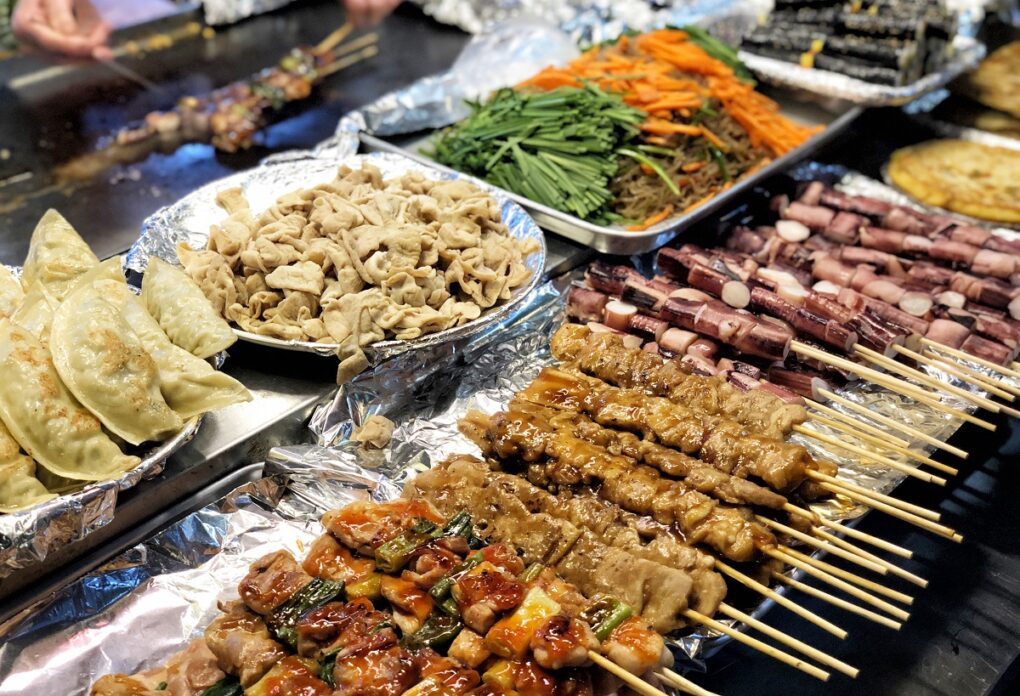
Jump to:
🍲 Best Korean Street Foods Overall
Soondae (순대, Korean Blood Sausage)
Where in Korea to Find it: most street stalls and pojangmacha
Soondae is another popular Korean street food that can be eaten skewered or with soup. It is typically made with cow or pig intestines that have been stuffed with a variety of ingredients, including pork blood, glutinous rice, vegetables, and glass noodles.
These soft, chewy sausages are steamed, sliced, and typically served with liver and lung slices. If you’re ever in Gangwon Province, where I lived for three years, I recommend you try ojingeo soondae, which uses cooked squid instead of cow or pork intestines to hold the filling together.
The dipping sauces served with soondae are vast and varied - soy sauce and mustard, salted shrimp, salt and pepper, occasionally soondae with tteokboki sauce, vinegar and gochujang, or a salty mixture of peppers, chili powder, sesame seeds, and well, a sprinkle of MSG.
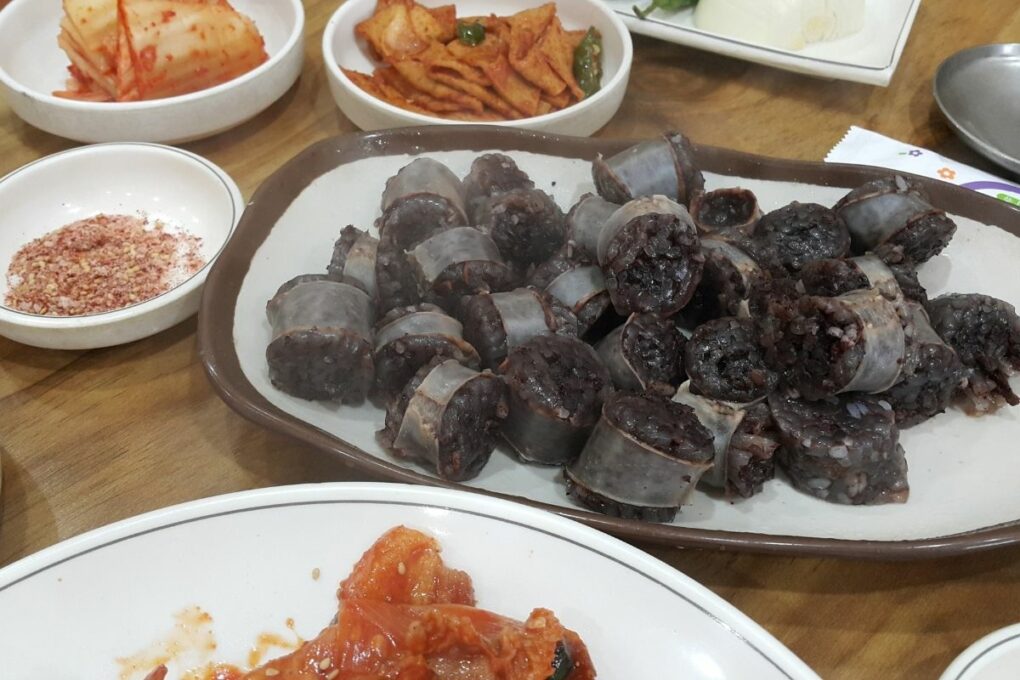
Dakgangjeong (닭강정, Boneless Korean Fried Chicken)
Where in Korea to Find it: Fried chicken joints everywhere in Korea
Hands-down one of Korea's favorite street foods is known locally as dakgangjeong and popularly around the world as simply Korean Fried Chicken. The skin is prized for its thin but superbly crisp, crackly crust, typically glazed with soy garlic or yang yeom sauce (a spicy-sweet red sauce).
To maintain its supreme crunchiness, the Korean version of fried chicken is typically a super crunchy fried chicken that is double-fried after being dipped in the sweet and spicy sauce. We can't get enough of the crunchiness, so much so that we keep this recipe on hand to satisfy cravings.
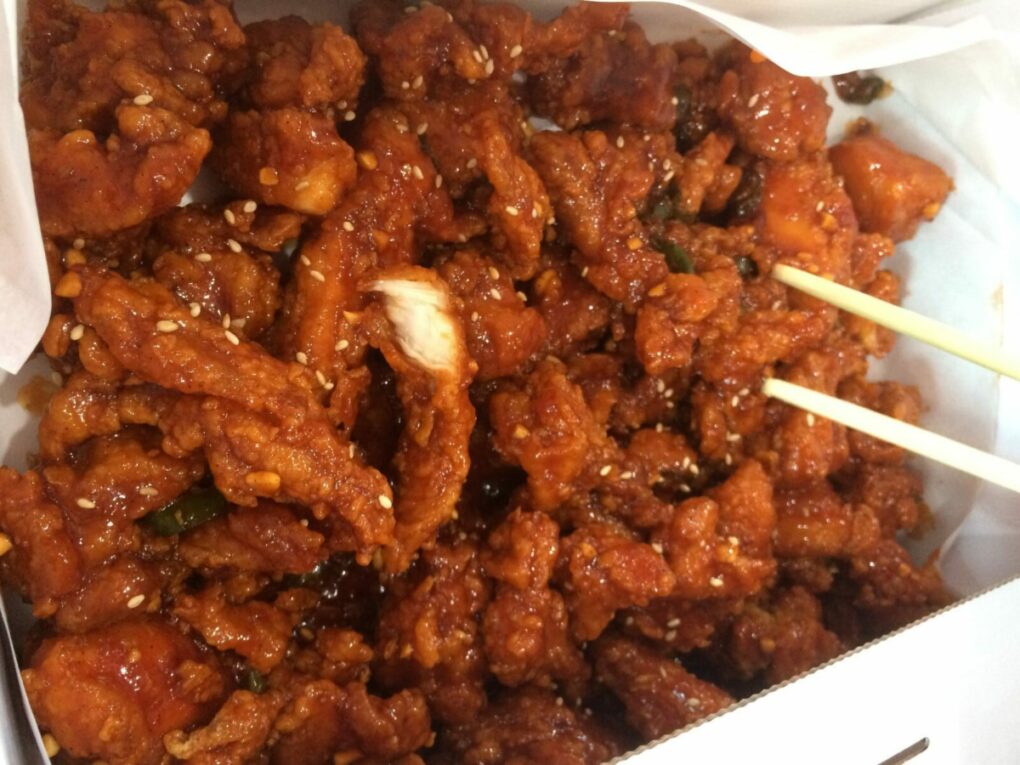
Ddongppang (똥빵, Poop Bread)
Where in Korea to Find it: street food stalls in Insadong
This poop-shaped bread is very strange to look at, but tastes seriously delicious. The freshly-made bread is filled with red bean paste and walnuts, and goes great with a rose latte from the poop cafe (served in a tiny toilet!).
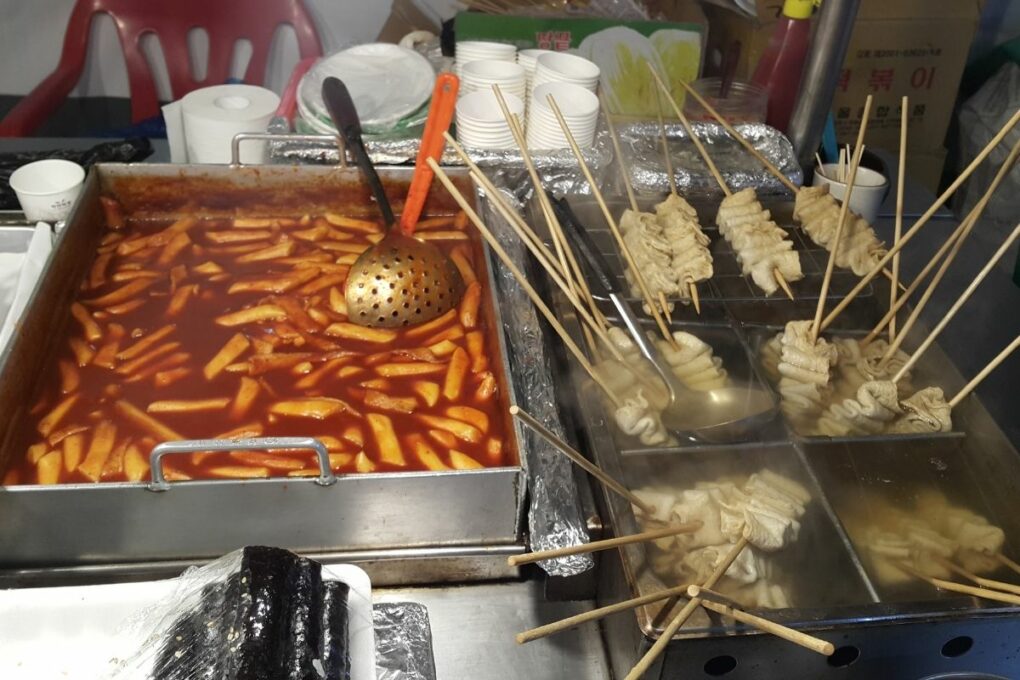
Eomuk Taeng (어묵국, Korean Fish Cakes)
Where in Korea to Find it: Street food stalls all over Korea
Eomuk tang is a skewered fish cake. The texture of the fish cakes is soft and flavourful, and each skewer is shaped like hot dogs, or more commonly folded over in a zigzag.
Particularly popular in the winter, they’re always served hot from street food carts. To eat eomuk, you ladle some broth into a paper cup and grab a skewer, or two or three until you're fully satisfied, and then pay for what you’ve eaten.
Soy sauce is usually available to be drizzled or brushed onto your fish cake skewer. You’ll typically also eat Korean fish cakes alongside spicy Korean rice cakes, known as deokbokki, and some people like to dip their fish cakes into their spicy sauce.
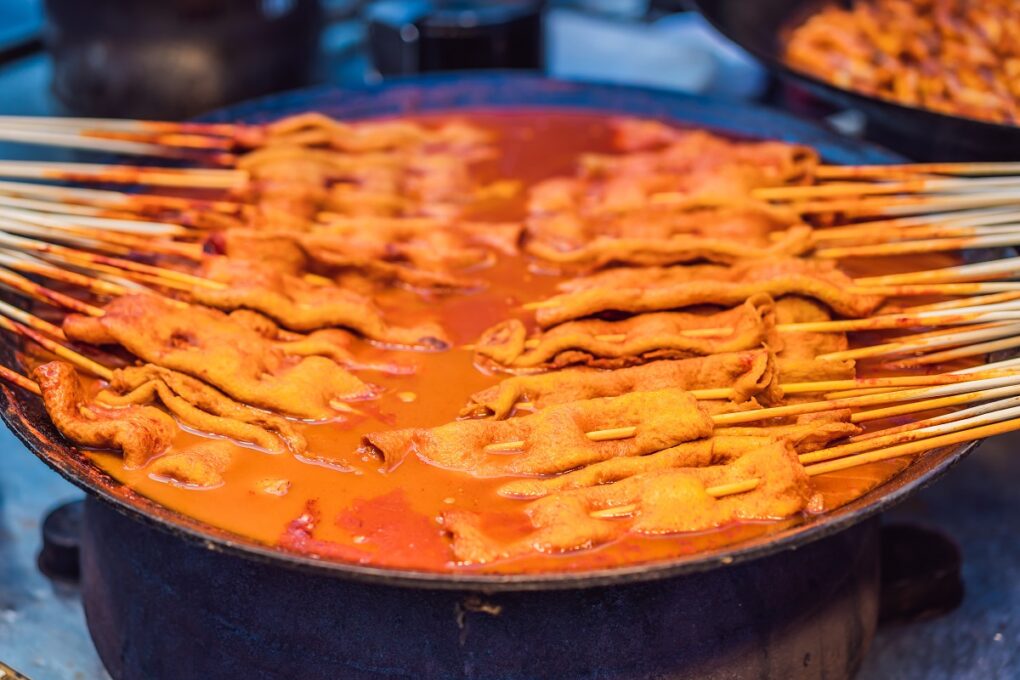
🔥 Spicy Korean Street Foods
Tteokbokki (떡볶이, Spicy Rice Cakes)
Where in Korea to Find it: absolutely everywhere
Tteokbokki are chewy cylindrical rice cakes drenched in a sweet red chili sauce (or gochujang sauce). Voted as the #1 comfort food in Korea (according to the Seoul Metropolitan Government), this spicy and crave-worthy Korean street food dish is often served with fish cakes and garnished with green onions.
Tteokbokki is available on nearly every street corner in Seoul, as well as the rest of South Korea.
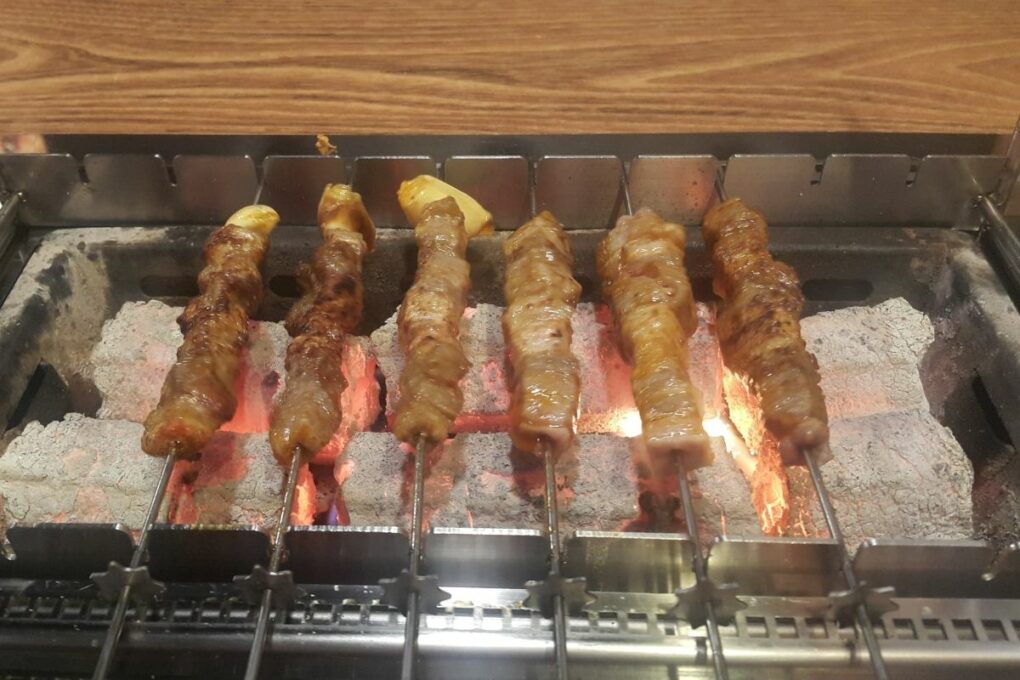
Bomb-Flavored Ddakkochi (닭꼬치, Really Spicy Chicken Skewers)
Where in Korea to Find it: literally everywhere
Bomb-flavored ddakkochi is a highly-regarded spicy Korean street food, basically grilled chicken skewers. They are a step above regular chicken skewers (ddakkochi) because the heat level is absolutely explosive.
It’s usually skewered with scallions to add a sharp umami contrast to the meat, and is spicy, sweet, and savory all in one meaty bite. Aside from pre-marinating the meat, the sweet-spicy sauce is also brushed on while it is being barbecued to enhance the flavor.
Some vendors also serve ddakkochi with mustard sauce or mayonnaise, and they’ll ask you when you order what flavor sauce you want.
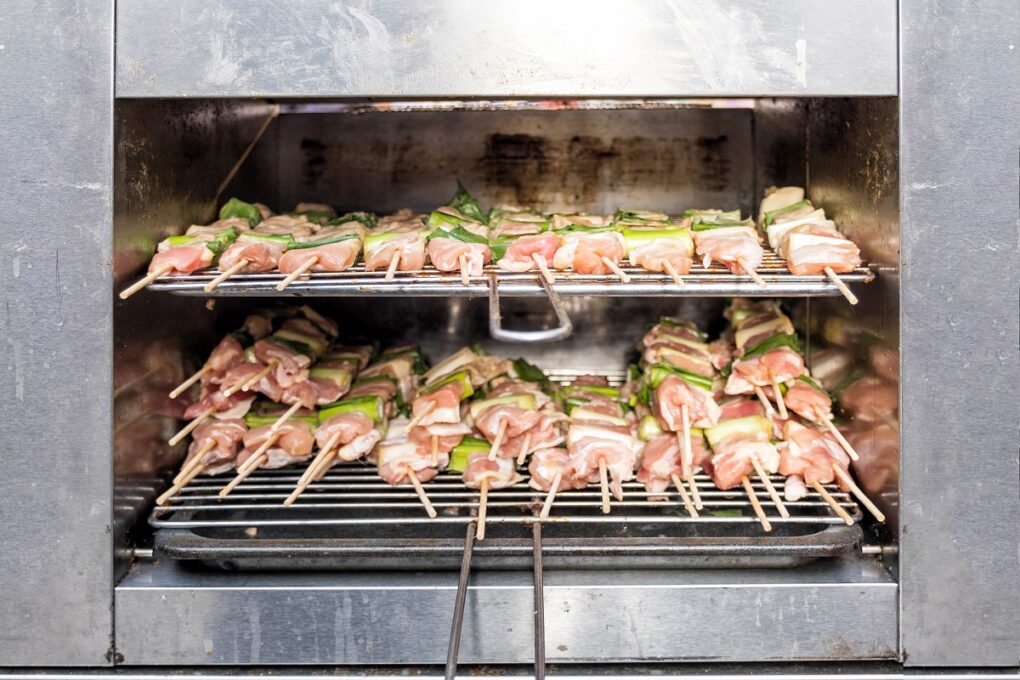
🧁 Sweet Korean Street Foods
Hotteok (호떡, Sweet & Chewy Korean Pancakes)
Where in Korea to Find it: Everywhere in Wintertime
Hotteok is one of our favorite sweet street snacks, and is best eaten piping hot in cold weather.
It's a popular glutinous pancake sold at numerous street stalls throughout Korea, and comes in a few different flavors.
The pancake dough is made of yeasted wheat flour & glutinous rice flour, and the filling is a mixture of cinnamon, brown sugar, and nuts such as peanuts and walnuts. Vendors flatten dough balls into disks and fry them until golden brown, with each cake prepared fresh to order and served in a paper cup.
The pancakes, which can be thick or thin, have a crispy exterior and a tender, chewy interior. A Busan variation known as ssiat hotteok contains black sesame, sunflower, and pumpkin seeds in the dough.
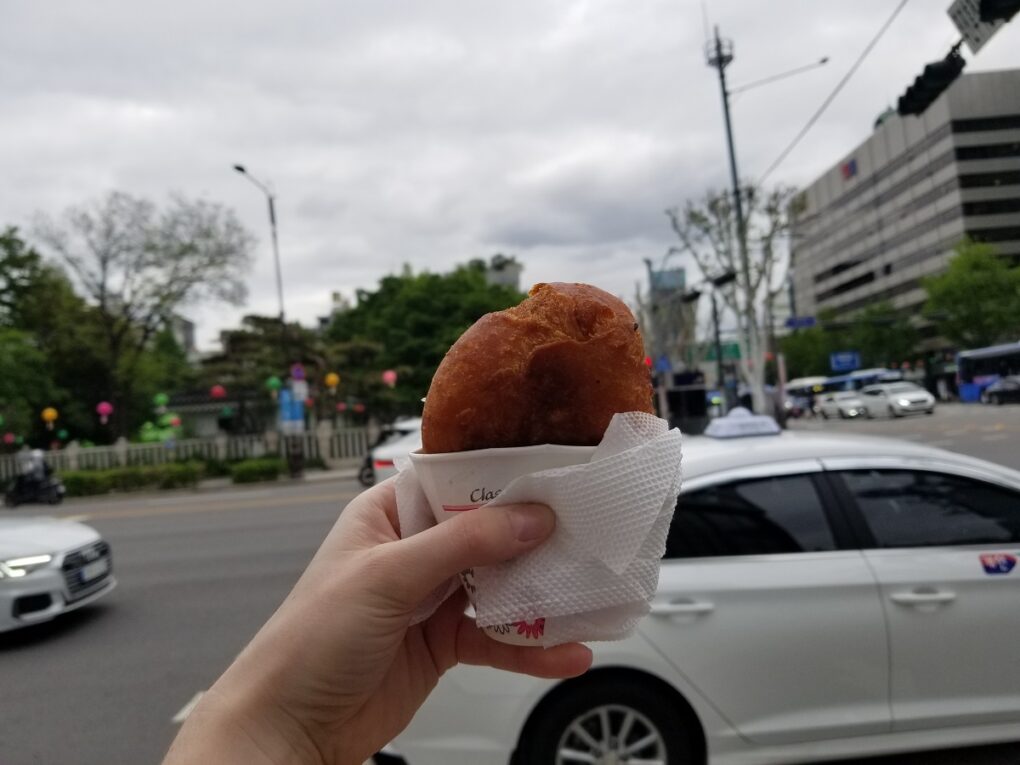
Bungeoppang, Gukhwa-ppang (붕어빵, 국화빵, Red Bean Fish-Shaped Pancakes)
Where in Korea to Find it: everywhere, especially in front of schools
These iconic fish-shaped sweet cakes sold on the streets of Korea are called Bungeoppang and (the less crispy chrysanthemum-shaped) Gukhwa-ppang. In Korean, a "bungeo" is a crucian carp that resembles a large goldfish, and "ppang" is bread.
Contrary to appearances, the filling of bungeoppang is a sweet red bean filling rather than fish; they’re generally vegetarian-friendly. These golden brown, waffle-like fish pancakes have a soft and crisp exterior that gives way to the piping hot, delicious red bean paste.
Many vendors also sell cream-filled or Nutella-filled versions. Try this recipe and make a red bean, cream, Nutella, or chocolate-filled version.

Ppopgi (뽑기, Dalgona Candy)
Where in Korea to Find it: homemade, street vendors in Insadong, or Korean grocery stores
Dalgona candy, also known as ppopgi, is a traditional and nostalgic South Korean candy. The Netflix series Squid Game helped make it popular, and TikTokers hurried to recreate the candy's creation in both the traditional and coffee forms.
Dalgona is made by melting sugar and mixing it with baking soda at the exact right time. The mixture should begin to foam and resemble whipped coffee. Then, it’s poured onto a flat surface and flattened into a thin disk, and imprinted with a shape before drying and becoming hard.
Due to concerns about the inability of dalgona to form, the term dalgona came to refer to a similar candy to ppopgi. Dalgona candy has a light, toffee-like texture and a nutty, sweet taste similar to toasted or burned marshmallows. If you want to try making it, here’s a recipe for you to explore.
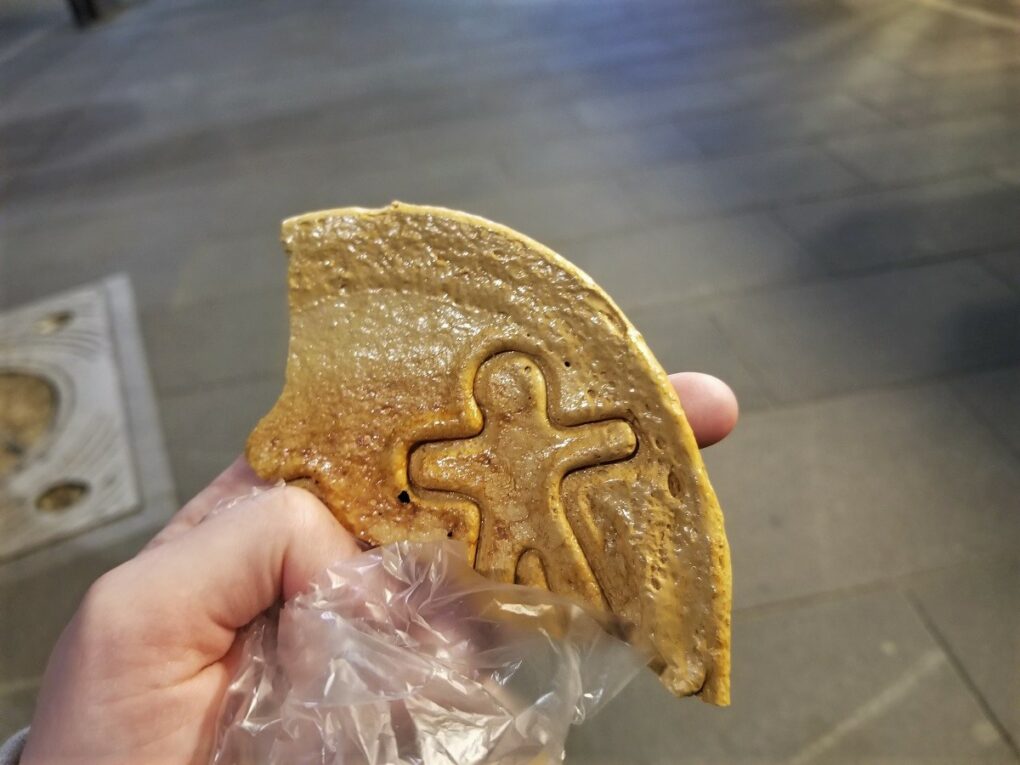
🍤 Savory Korean Street Foods
Twigim (튀김 , Fried Snacks)
Where in Korea to Find it: All over Korea sold in street markets, street vendors, restaurants, or pubs
Twigim is a Korean deep-fried battered snack. The batter is typically made with starch powder, bread crumbs, and flour, while the insides can be almost anything (each one will be labeled).
Squid, mixed vegetables, boiled eggs, sweet potatoes, and seaweed noodle rolls are just some of the ingredients that are dipped in batter and then fried.
These Korean snacks are inexpensive, convenient to eat on the go, and extremely tasty. This popular snack is also served as an appetizer prior to the main course in some Korean restaurants.
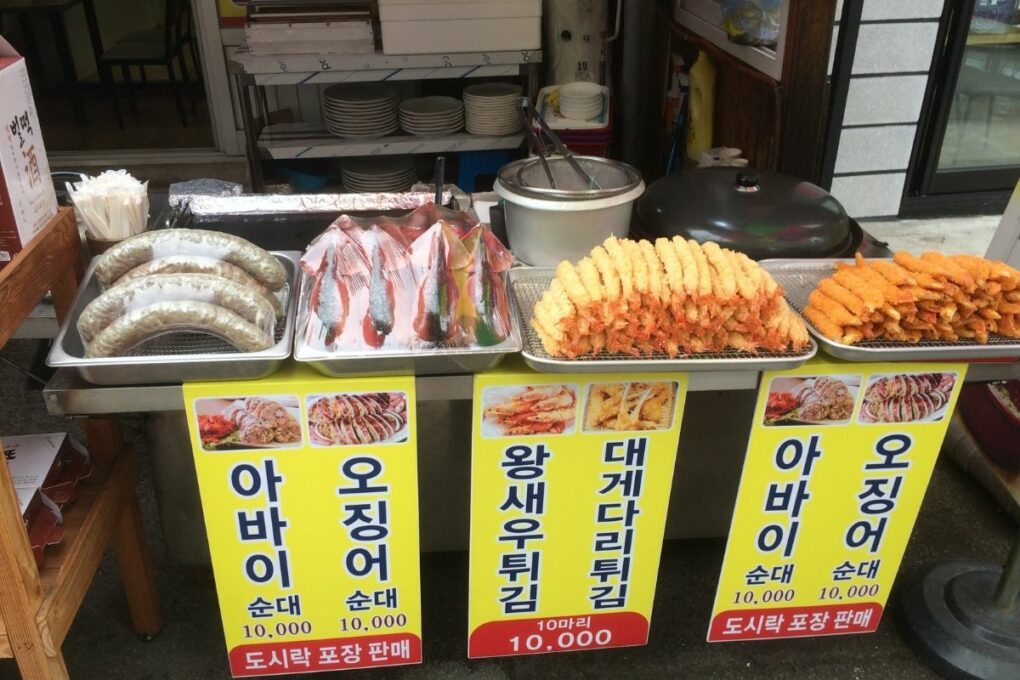
Bindaetteok (빈대떡, Mung Bean Pancakes)
Where in Korea to Find it: In street food stalls and markets all over Korea
This is a dish of ground mung beans mixed with vegetables or meat and then deep fried in oil. It is greasy, savory, mildly spicy, and extremely popular to munch on when drinking alcohol (amongst the snacks known as ‘anju’).
Made without flour, this gluten-free snack is crispy and golden on the outside with a hearty filling in the center. Typically made with ground mung beans, kimchi, and ground meat (like pork), these have a slightly nutty, salty taste.
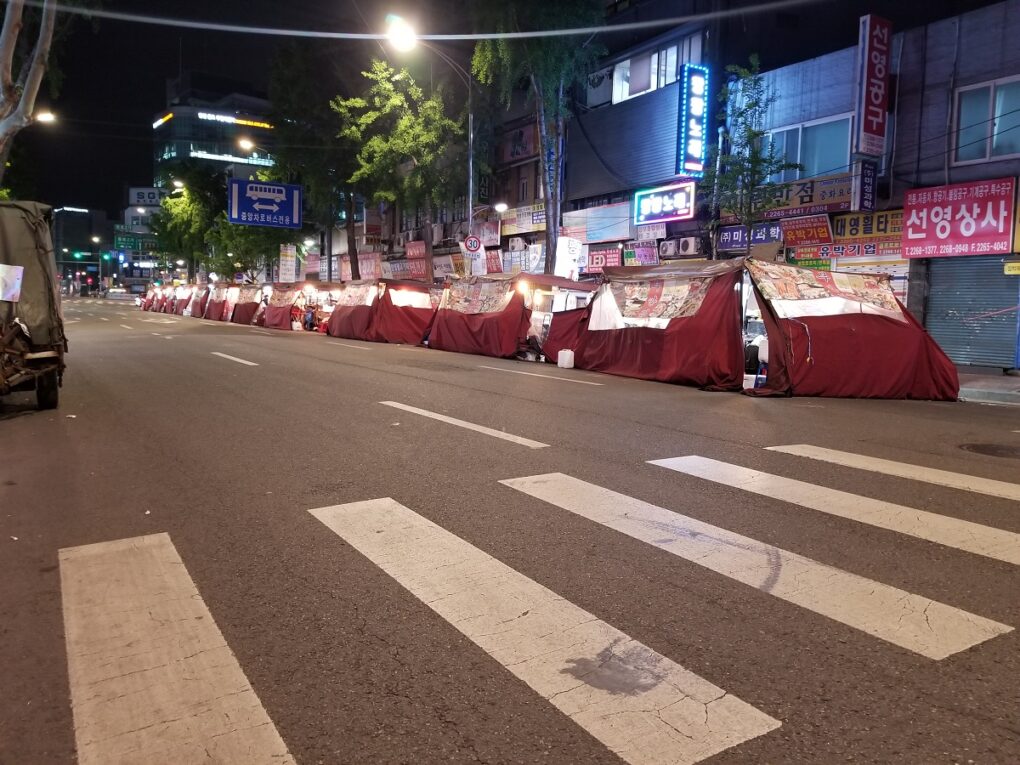
Gimbap or Kimbap (김밥, Korean Sushi Roll)
Where in Korea to Find it: Street food stalls or made at home
Gimbap or kimbap is similar to Japanese rolled sushi. It's one of the easiest and most convenient (pre-wrapped in plastic) Korean street foods to grab and go. Common fillings include sliced cucumbers, crunchy pickled radish, vegetables, fish cakes, spam, and egg wrapped in seaweed and sesame oil-seasoned rice.
It’s not uncommon to see busy Korean workers holding kimbap as they walk through the city on their way to work. Want to flex your sushi-rolling powers and have an instant office or school snack to boot? Try this recipe.
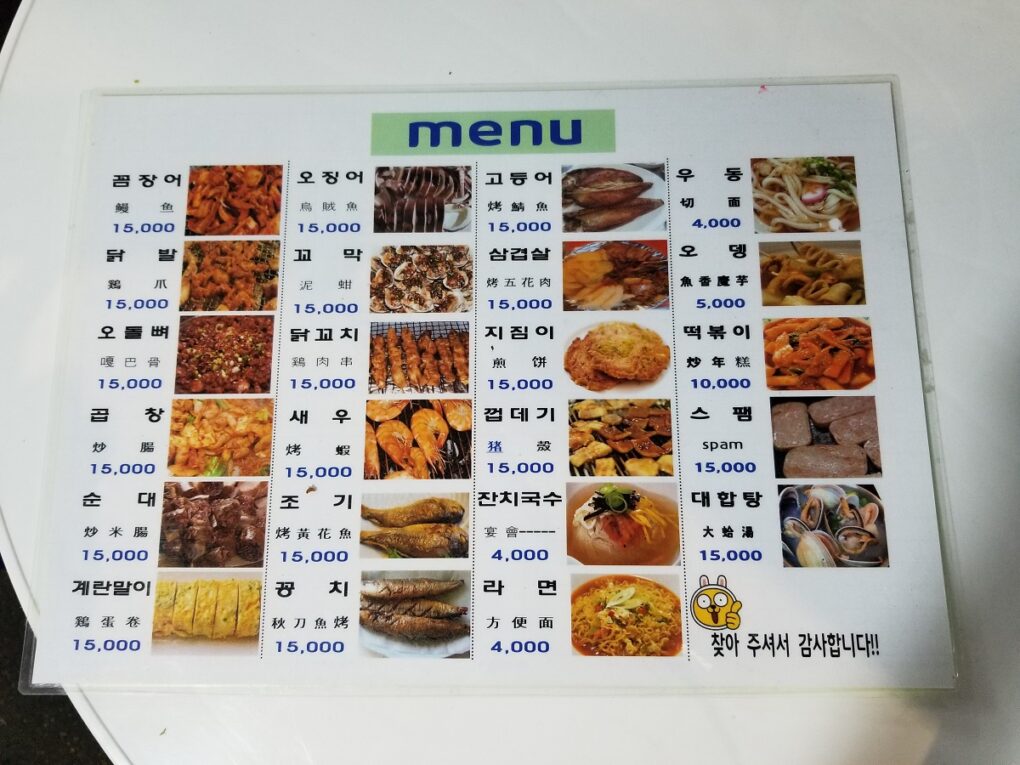
🧂 Salty Korean Snacks
Tokkebi Gamja (감자핫도그), Korean Corn Dog)
Where in Korea to Find it: Street food stalls all over Korea
More popularly known as Korean corn dogs, these Seoul-style hotdogs are dipped in glutinous rice flour batter and then doused with ketchup, mustard, or chili sauce. If you’re feeling festive, a tokkebi gamja hotdog is a batter-dipped sausage (or cheese) that has a crust of square-cut French fries.
It’s also rolled or sprinkled with sugar, and then generously squirted with condiments like ketchup and mayonnaise (usually self-serve).
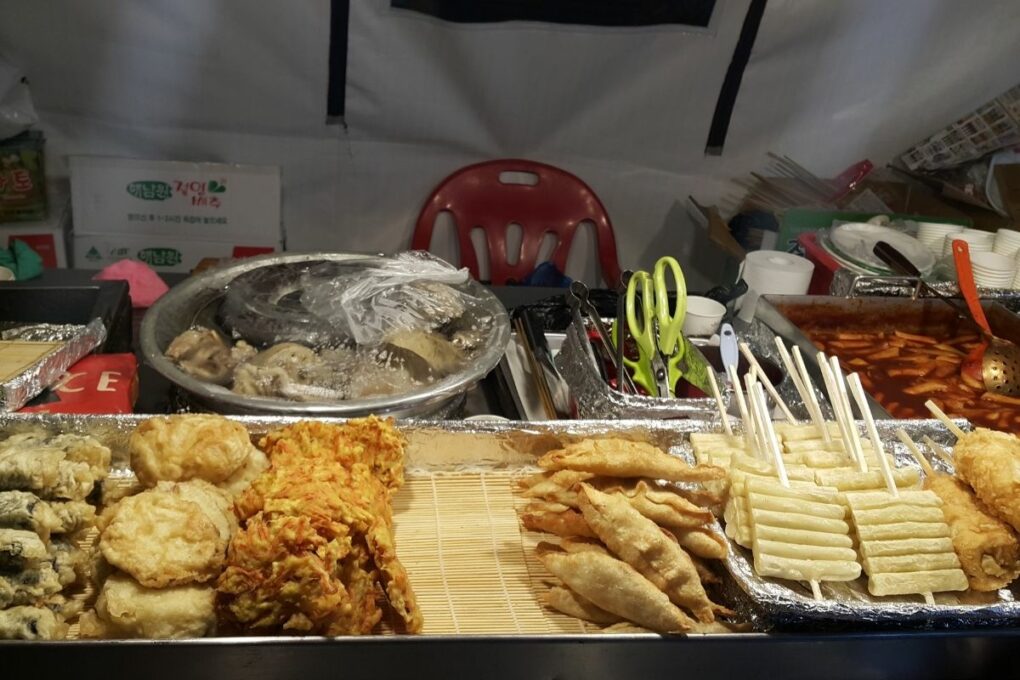
Mandu (만두, Korean Dumplings)
Where in Korea to Find it: Street markets or can easily be made at home
Known as mandu or mandoo, Korean dumplings are commonly filled with minced meat (usually pork), tofu, bean sprouts, green onions, garlic, glass noodles, and kimchi. It’s another famous Korean street food that can also be enjoyed as a main dish.
Originally eaten during feasts or ancestral rites, mandu can be boiled, steamed or fried. As a street snack, there are typically two choices - pork and kimchi mandu. In our opinion, it doesn't require any additional dipping sauce because it’s already very flavorful, but it sure is fun to dunk it in the soy-vinegar sauce.
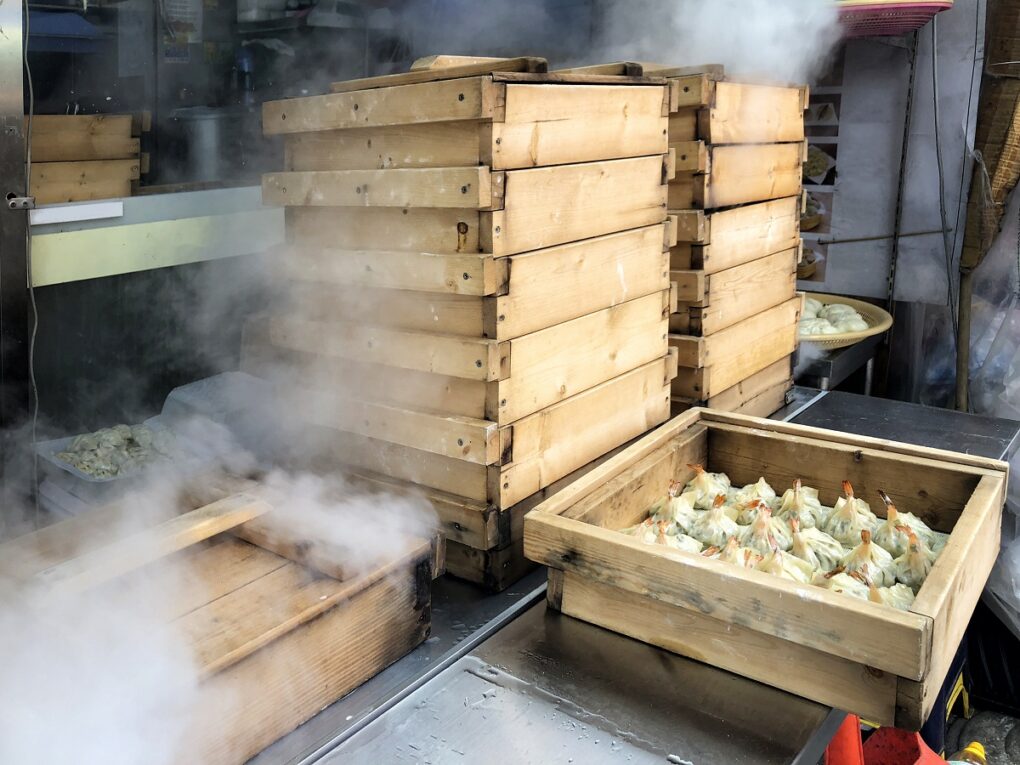
Gyeranppang or Kyeranbbang (계란빵, Egg Bread)
Where in Korea to Find it: Korean street markets and stalls
Gyeranppang is an oval-shaped golden muffin topped with a moist whole egg. It is a popular cold-weather snack that originated in the port city of Incheon, and it was actually the first Korean street food I ever tried when I moved to the ROK.
Flour, baking powder, milk, eggs, butter, sugar, and salt are the typical ingredients used to make the dough. Cheese, diced ham, and parsley are among the typical toppings, but on the street they’re usually made in a custom machine, cooked until golden brown with a whole egg cracked on top.
It's a warm and comforting snack for cold Korean winters, dense and comforting, savory and sweet. Feel free to hack this delicious egg bread by checking out this recipe to make gyeranbbang at home.
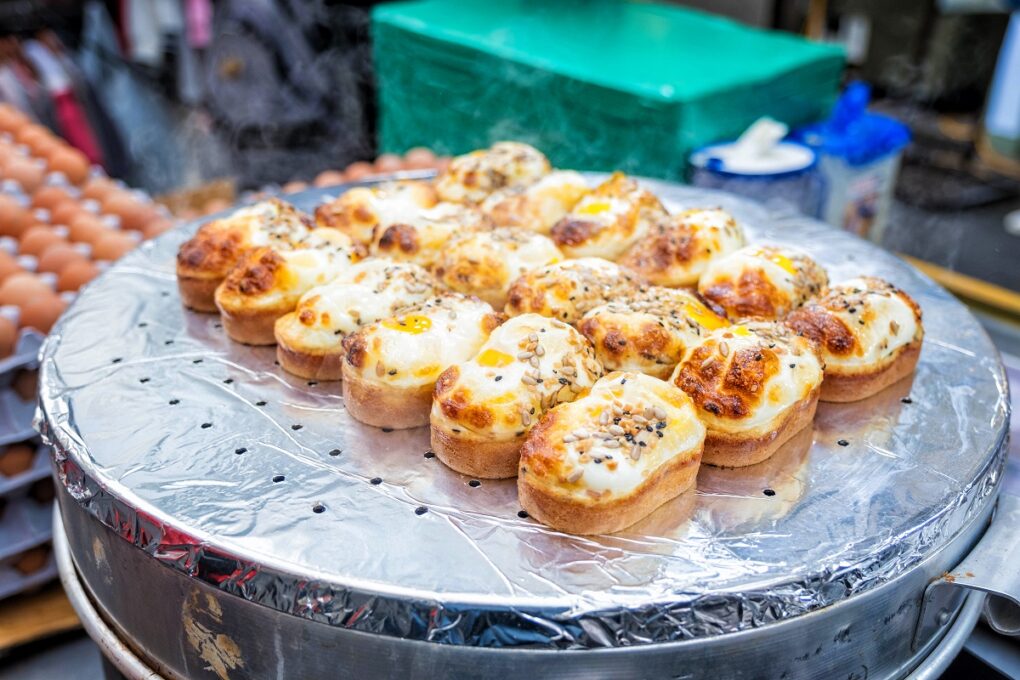
Hweori Gamja (회오리 감자, Twist Potatoes)
Where in Korea to Find it: Korean street markets and stalls
Tornado potatoes are yet another enjoyable and incredibly photogenic Korean street food snack. Twisty potatoes, also known as tornado fries, were so named because whole potatoes are cut into spirals and then skewered on a stick, forming a tornado or twister shape.
Sausage can also be entwined in the skewered potatoes (known as hweori gamja). It is a patented product developed by Agricultural Hoeori Inc.'s Jeong Eun Suk, but it is commercially and legally permitted to be sold in street markets, fairs, and events.








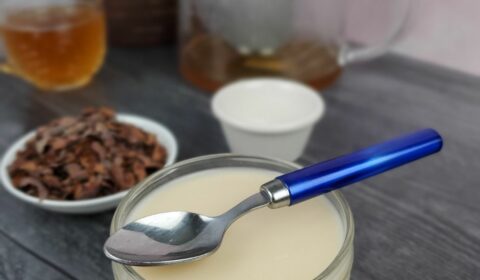
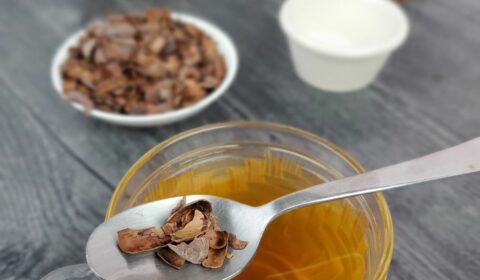


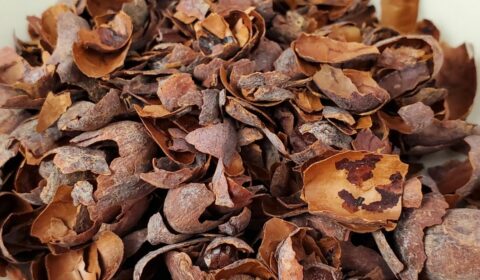




Min
Hi thank you for your interesting post on Korean street food!! I have a general question. I can’t take beef due to religion. So, what kind of Korean street food I should avoid at all cost? What type of meat do Korean uses for their corn dogs? Thank you!
Max
My pleasure, Min! But luckily for you, beef is uncommon in Korean street food due to the higher cost; it's largely pork and chicken, when there is meat involved. However while Korean corn dogs are almost always pork, I don't think there's a standard answer and so I don't feel comfortable saying that ALL Korean corn dogs are beef-free. If you really want to try one during your visit, I would use Google translate to confirm the type of meat in the corn dogs, but everything else should be fine. Only at some of the sit-down restaurants might you run into beef broths and beef dishes.